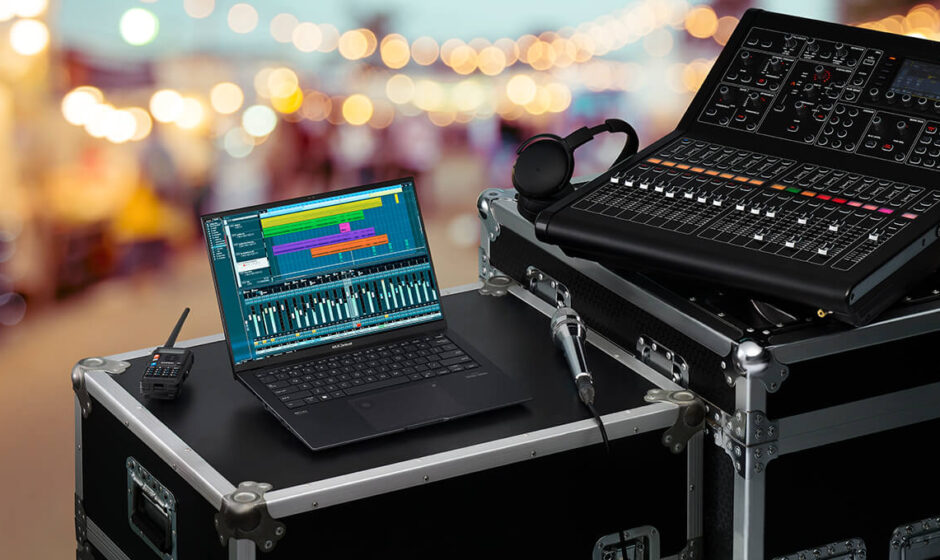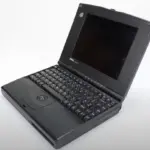For music producers, a computer is the most essential musical instrument, the hub of their digital workspace. Whether you’re running a major DAW like Ableton Live or Logic Pro or a simpler, cheaper setup, a laptop is ideal: powerful, portable, versatile. A good laptop can handle your production needs and act as a hub for all your other tools, from digital instruments to keyboards, mics, and DJ decks. Better yet, since music production is easier on computers than, say, video editing, a good laptop could run your workflow for years to come.
There are numerous factors to consider when choosing your ideal music production laptop. Bigger screen or greater portability? How much hard drive space? Processor? RAM? All of these considerations and more will depend on your particular needs. In this guide, we’ll walk through all of the major decisions you’ll have to make as you shop for the perfect laptop to produce music on.
Size matters when choosing a music production laptop
If you’ve ever been in a professional studio, you may have noticed how big the mixing displays are. Whatever your DAW of choice, you’re likely to be working with multiple levels, and the more you can see, the easier your content is to mix. Plugins and VSTs can also clutter a smaller screen.
However, that doesn’t automatically equate to the biggest box on the market. Screen real estate comes at a cost: you still have to carry the thing. If you play live, your machine has to travel comfortably alongside all your other gear. Even if you don’t, bigger laptops are less convenient to move and trickier to fit into production setups.
If portability is a priority, one good option is a small laptop for gigging, plus a big standalone monitor (or two) for your home setup. Some screens can even travel with your gig setup. The laptop will let you carry your work to your performance space and make basic adjustments on the fly. The monitor will make your home production workflow more legible. Whether you’re using the laptop screen or an external monitor, resolution is key: DAWs and plugins often have lots of tiny elements in their UIs. High-resolution visuals make it much easier to see what you’re doing. Consider 14″ the minimum size for a laptop you intend to produce on directly. For anything smaller, you’ll want a standalone screen.
Storage is key for music production laptops
Music production makes files stack up. Between the DAW, plugins, sample libraries, and all the actual music you record, it’s easy for productive producers to chew through hundreds, even thousands of gigabytes without noticing. Storage is crucial.
One option is to store work on external drives. There are definite advantages to that approach: In addition to providing redundancy so you don’t lose your work, thumb drives and external SSDs make it much easier to move, share, and perform your work. At the same time, stopping every 5 minutes to slowly save your work to an external drive can kill a creative groove. To keep things flowing, look for a laptop with at least one terabyte of storage space, ideally solid-state. SSD, as opposed to disc-based hard drives, speed up your workflow while keeping heat down, helping your machine to not fry itself trying to manage ten VSTs and 20 tracks in Ableton. Prioritize laptops that allow hard drive upgrades as well.
CPU power can make or break a production session
When it comes to music production, processing power is key. CPU power is probably the single most important spec for a music production laptop. Running multiple audio tracks will tax your system, and many plugins burden it further. With a couple instances of Serum, or if you use pretty much anything from iZotope or Waves, lightweight CPUs will start to struggle, devolving your production session into a laggy mess.
As to specific power needed, that depends on your DAW and the plugins you use. For example, Ableton Live Suite 12, the latest version of the popular DAW, recommends a minimum specification of an 5th generation Intel Core i5 or AMD Ryzen processor on Windows, or any Apple computer running Apple’s proprietary M1, M2, or M3 silicon. However, that’s the base requirement for the program itself. Plugins and external inputs will significantly increase CPU load.
According to Intel, one rule of thumb for choosing a music production laptop is to count the cores. Because each core processes data on its own, and because each virtual instrument or track in an audio project will run as its own process, a CPU with four or more cores will generally be better for music production. Laptop manufacturer ASUS says the same, adding that you should also pay attention to thread counts and clock speeds.
RAM is a music producer’s biggest bottleneck
Assuming your laptop’s processor is up to spec for your setup, the next possible bottleneck for music production workflow is RAM. Because RAM acts as the short-term memory of a computer, the more RAM you have, the bigger your music projects can get without lagging, stuttering, or otherwise giving you a headache. Each new track or effect uses some RAM, and with other programs in the background — a sound library like Splice, for example — memory demands can get big fast. Get a laptop with as much RAM as possible — at least 16GB, though 32GB or more will guarantee that, no matter how good your production skills become, you’ll never outgrow your machine.
It’s important to note that, on many laptops, adding more RAM is a relatively simple process. Make sure that your laptop is built with that in mind; get a model that lets you crack open the chassis and add more sticks of RAM without fuss. Because RAM is quite cheap these days, you can save money by purchasing a laptop with extra RAM slots and adding more on your own later, thus ensuring more of your budget can be directed toward non-upgradable components like the CPU and display.
I/O and other specs
For most music producers, you won’t be using your laptop alone to make songs. You’ll need to connect an audio interface, MIDI controllers, external displays, and more. That means the port selection on your laptop of choice needs to be robust. If you pick up a laptop that only has a couple of USB ports, you’ll quickly find that you’re always unplugging something to make room for something else. Worse, you may just not have enough room for every parallel element you want to run. Look for lots of USB inputs on your production laptop, plus HDMI or DisplayPort if you plan to connect a bigger display.
Great port selection is harder to find than ever these days. As laptop manufacturers focus on making slim, powerful devices, they’ve often achieved those form factors by deprecating a number of larger ports in favor of the slimmer, universal USB-C standard. If you’re willing to carry around a bunch of dongles, you can sometimes make these sorts of laptops work for music production, but it’s best to not need another bit of gear that you’re likely to misplace at the bottom of a bag.
Windows or Mac OS?
One major consideration for those choosing a music production laptop is whether to get a Windows PC or a MacBook. While incredible laptops that make music production a breeze are available in either camp, there are pros and cons to both platforms.
While this writer has never used a Mac for music production, many of the largest producers in the world use Apple machines to write hits. Apple’s best delivers impressive performance and the Apple ecosystem has always been both easy and robust for musicians and other creatives. If you do go the Apple route, your best option will likely be any of the latest MacBook Pro models, since they come with a good selection of ports. It’s probably wise to avoid MacBook Air models, as their lackluster I/O and diminished performance compared to the Pro may prove to be a hindrance for larger music projects.
Windows machines offer more options. You could opt for a massively powerful gaming laptop, you could find something slim and light with a good CPU and plenty of RAM, or you could opt for anything in the middle. If you’re already producing music on one of the two OSes and are accustomed to it, the safest option is to stick with what you already know. Also, think about your phone: If you’ve got an iAnything, use the Apple ecosystem. If you’re on Android, stick with Windows to keep all your technology playing nice.
Conclusion: your unique musical needs should guide your laptop decision
Ultimately, your production machine will come down to your unique needs. If you’re an Apple user, your options are fairly straightforward. If you favor Windows, you’ll need to compare specs across devices, then figure out which one delivers the most of your needs within your budget.
Prioritizing the processor and RAM is generally a good idea, as you should ensure both are beefy enough to handle your specific workload. Next, storage. Finally, you analyze the port selection and overall dimensions of the machine, ensuring you have the basic input tools you need.
You may have noticed that we did not touch on headphone jacks or built-in laptop speakers. That’s because we strongly recommend you use an audio interface for your headphones and sound system, rather than counting on a laptop’s 3.5mm jack and unimpressive onboard speakers.
Ultimately, though, the greatest tool in any musician’s belt is their own creativity. Plenty of incredible music has been created on laptops that were barely able to run a DAW. If you can’t afford the music production laptop of your dreams, don’t stress. Anything is better than nothing; the important thing is to find a tool that lets you express yourself musically.




